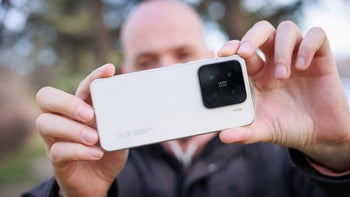Google's Pixel 10 and 11 poised for camera upgrades and new AI tools

Pixel 9 | Image credit – PhoneArena
New camera and AI tricks for Pixels thanks to future Tensor chips
Google has been heavily invested in enhancing camera and AI features across its Pixel lineup, and it seems that focus will continue with the upcoming Pixel models, too. According to a recent report from tech media outlet Android Authority, leaked documents from Google's gChips division reveal a few new features likely to make their way to the Pixel 10 and Pixel 11.
One of the standout features is "Video Generative ML." Though its name leaves much to the imagination, it looks like Google wants to make video editing a breeze, allowing users to edit their clips with the help of AI that actually understands what's happening in the video.
Additionally, Google is exploring photo editing features such as "Speak-to-Tweak" and "Sketch-to-Image." The latter is likely similar to Samsung's Galaxy AI, allowing users to turn sketches into images.

Google’s upcoming feature might work in a similar way to Samsung’s one. | Video credit – Samsung
The report does not stop here. It looks like the Tensor G5 might finally support 4K 60fps HDR video – a step up from previous models that capped at 4K 30fps HDR. But that's not all; the Pixel 11 could potentially introduce 100x zoom capabilities, powered by machine learning, for both photos and videos.
The leaked documents also hint at a "next-gen" telephoto camera built to enhance this zoom feature, suggesting we could see some substantial hardware upgrades along with these AI-driven advancements.
The Pixel 11's Cinematic Blur is also set to get a major upgrade, supporting 4K at 30fps along with a fresh "video relight" feature that should allow for adjustments to lighting in videos. These capabilities are set to be powered by a "Cinematic Rendering Engine" integrated into the chip's image signal processor, which not only enables these new effects but also cuts down the power usage of video recording with blur by nearly 40%.
Reportedly, Google has specified that the feature is optimized for lighting as low as 5-10 lux, which is about the same as a dimly lit room. This capability might also take advantage of new camera hardware to deliver the expected performance in such low-light conditions.
As you may have noticed, Google is really going all-in on camera tech with its Pixel lineup (not too surprising for a brand called "Pixel," right?). So, I think it's hardly a shock that many of these rumored upgrades focus heavily on imaging and video. That said, while the Tensor G5 might support these advanced features, it doesn't guarantee every one of them will make it to the final devices. But it does show that Google is at least considering these additions for the Pixel 10 and Pixel 11 series.










Things that are NOT allowed: